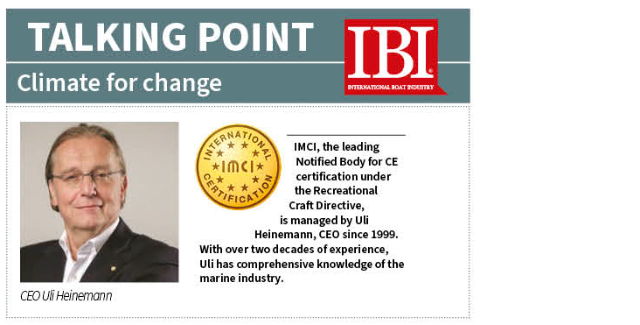TALKING POINT on IBI
Climate for changeOur maritime sector is facing huge changes. What will it look like in about 10 to 20 years?
One thing’s for sure – that time will fly by. Perhaps rising temperatures will encourage migration away from the equator towards the poles.
Will the appeal of the Mediterranean lessen, will a balmy northern Europe become the place to enjoy the water?
Marina operators will have to follow. The search for alternative fuels is in full swing. The shift from combustion engines to electric drives will also force marina operators to rethink, as the electrical supply services that have been standard in the harbours up to now will no longer be sufficient. It’s not just the boats, but the cars of the boat owners that will also need charging onsite.
Can the power still be supplied by the public grid? Or would it not be better to switch to an own decentralised power supply? Through small wind power plants, fuel cells and other technologies?
Additional photovoltaic systems could also provide shade for parking spaces. Independence from the public power grid is particularly advantageous in areas of the world that suffer from regular power outages. Electrical self-sufficiency is also likely to be available at more stable prices due to its independence from the market. The rising sea level will lead to floating rather than fixed jetties. The protection of the harbours will require an increase of waterfront constructions. Fuelling stations in marinas will have to offer renewable fuels, hydrogen or ammonia, as well as very fast charging facilities for batteries.
What boats will float in the harbours?
The powerboats’ propulsion systems, if not electric, will be equipped with internal combustion engines that can digest renewable fuels. Hydrogen and ammonia drives will also be found. The power of the engines will be lower on average, as will the top speeds. The trend will be for displacement rather than planning, craft. Hydrofoils will become increasingly commonplace, and we’ll see an increase in sailing yachts. Shipyards will increasingly look to renewable materials for the construction of boats and yachts, as legislators will demand a balance of the materials used against their disposal. Sails will only be made from recycled plastics.
Though the production of aluminium is very energyintensive, it can be re-used almost indefinitely – could we see more aluminium used in boat construction; more glued timber constructions and plywood structures?
The clock’s ticking – and it may be some time before the horizon becomes more clear. But from here, the outlook doesn’t look doesn’t look so bad, does it?

